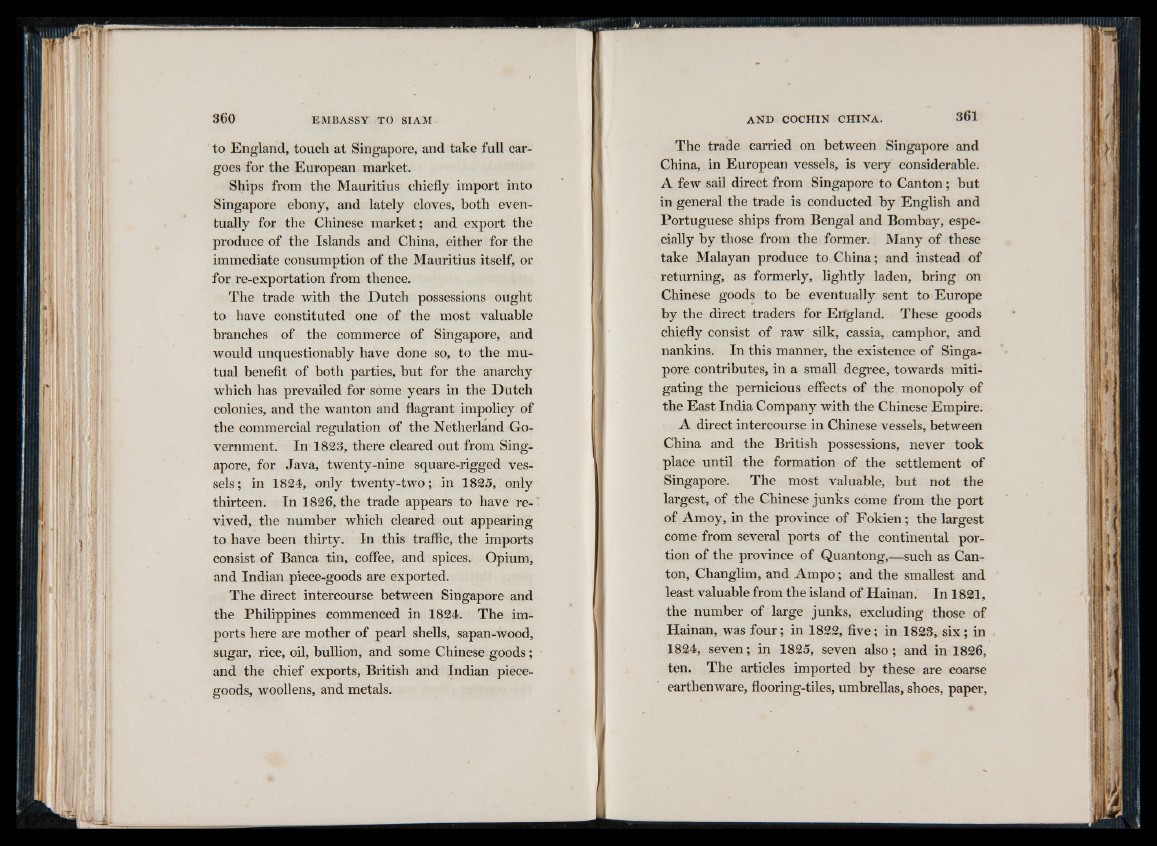
to England, touch at Singapore, and take full cargoes
for the European market.
Ships from the Mauritius chiefly import into
Singapore ebony, and lately cloves, both eventually
for the Chinese market ; and export the
produce of the Islands and China, either for the
immediate consumption of the Mauritius itself, or
for re-exportation from thence.
The trade with the Dutch possessions ought
to have constituted one of the most valuable
branches of the commerce of Singapore, and
would unquestionably have done so, to the mutual
benefit of both parties, but for the. anarchy
which has prevailed for some years in the Dutch
colonies, and the wanton and flagrant impolicy of
the commercial regulation of the Netherland Government.
In 1823, there cleared out from Singapore,
for Java, twenty-nine square-rigged vessels;
in 1824, only twenty-two; in 1825, only
thirteen. In 1826, the trade appears to have revived,
the number which cleared out appearing
to have been thirty. In this traffic, the imports
consist of Banca tin, coffee, and spices. Opium,
and Indian piece-goods are exported.
The direct intercourse between Singapore and
the Philippines commenced in 1824. The imports
here are mother of pearl shells, sapan-wood,
sugar, rice, oil, bullion, and some Chinese goods ;
and the chief exports, British and Indian piece-
goods, woollens, and metals.
The trade carried on between Singapore and
China, in European vessels, is very considerable.
A few sail direct from Singapore to Canton; but
in general the trade is conducted by English and
Portuguese ships from Bengal and Bombay, especially
by those from the former. Many of these
take Malayan produce to.China; and instead of
returning, as formerly, lightly laden, bring on
Chinese goods to be eventually sent to Europe
by the direct traders for England. These goods
chiefly consist of raw silk, cassia, camphor, and
nankins. In this manner, the existence of Singapore
contributes, in a small degree, towards mitigating
the pernicious effects of the monopoly of
the East India Company with the Chinese Empire.
A direct intercourse in Chinese vessels, between
China and the British possessions, never took
place until the formation of the settlement of
Singapore. The most valuable, but not the
largest, of the Chinese junks come from the port
of Amoy, in the province of Fokien; the largest
come from several ports of the continental portion
of the province of Quantong,—such as Canton,
Chan glim, and Ampo; and the smallest and
least valuable from the island of Hainan. In 1821,
the number of large junks, excluding those of
Hainan, was four; in 1822, five; in 1823, six; in
1824, seven; in 1825, seven also; and in 1826,
ten. The articles imported by these are coarse
earthenware, flooring-tiles, umbrellas, shoes, paper,